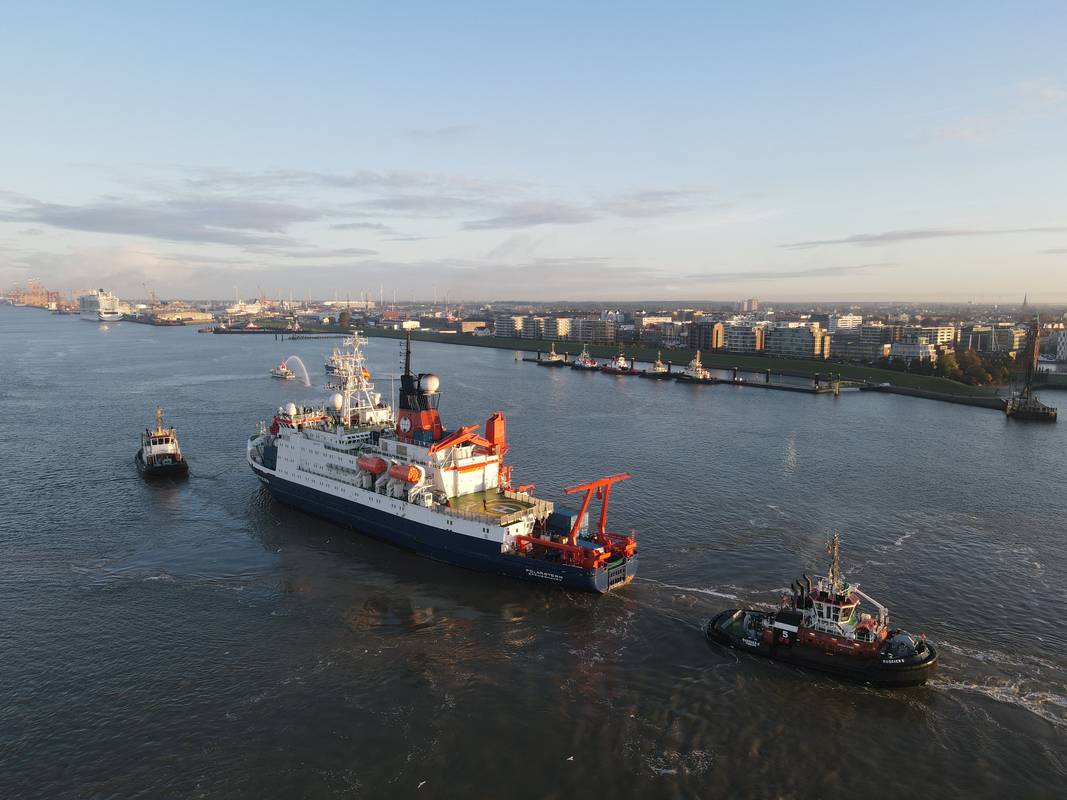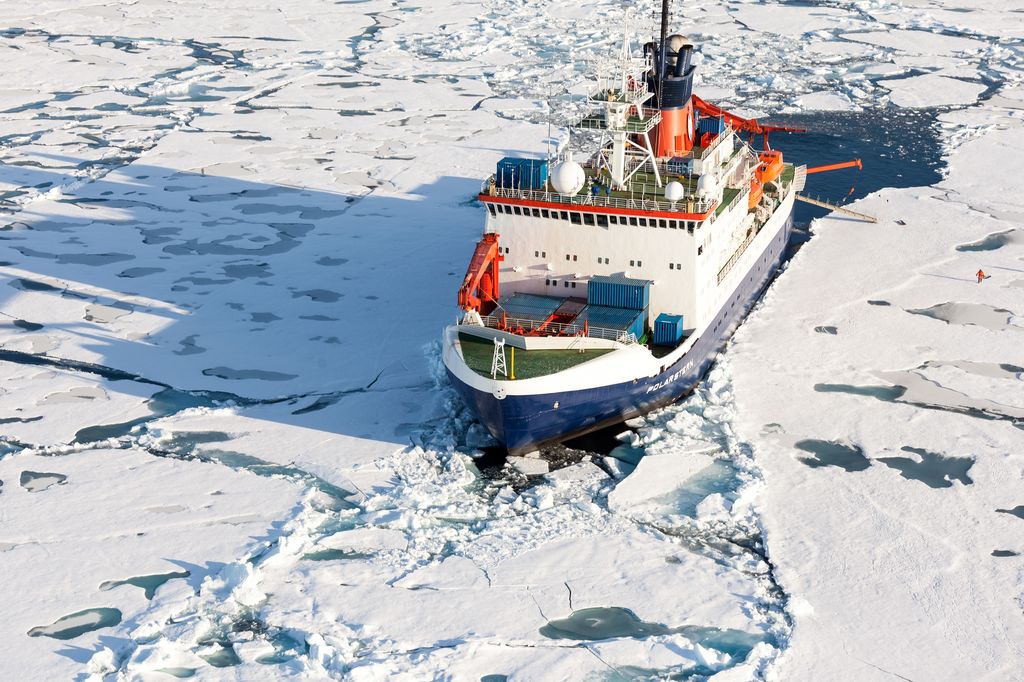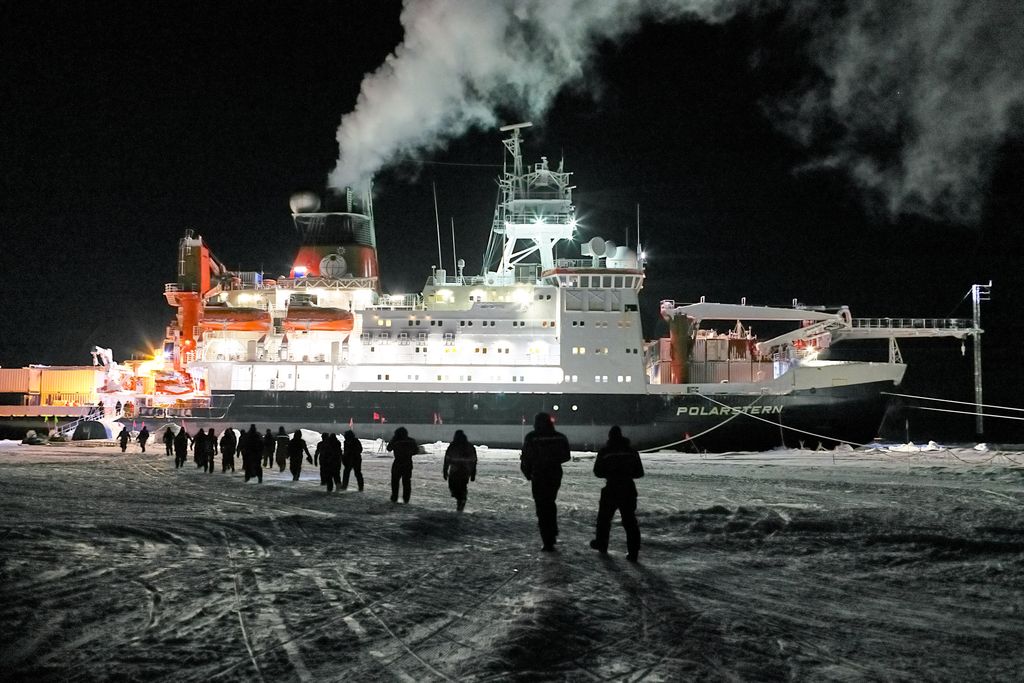Bremerhaven, Germany —(Map)
A ship that’s been frozen into the Arctic ice for the last year has finally returned home. After nearly 13 months, the researchers have gathered more detailed information on the Arctic than ever before. Much of the news is troubling.
The German ship RV Polarstern (“Polar Star” in English) is normally designed to break up ice. But last September, the ship set sail from Norway with the goal of getting frozen into the Arctic ice cap for a year.

(Source: Alfred-Wegener-Institute / Joachim Hofmann, [CC-BY 4.0] .)
The mission was part of a $155 million project known as MOSAiC*, led by Germany’s Alfred Wegener Institute (AWI). The goal of MOSAiC is to learn more about the ice that forms near the North Pole and how it’s affected by climate change.
Every winter, a layer of ice grows outward from the North Pole. The ice cap isn’t completely solid; it’s a collection of floes – floating sheets of ice. The floes are slowly pushed around the Arctic circle. As summer approaches, some of the ice melts and many floes break free.

(Source: Mario Hoppman, Alfred-Wegener-Institute.)
But as the world gets hotter because of manmade climate change, the Arctic is warming twice as fast as anywhere else, making the ice cap smaller and thinner. These changes affect weather patterns in the rest of the world, which is why scientists want to study them.
By last October, the ship was frozen into the Arctic ice north of Siberia. Over the next year, more than 300 scientists from 20 different countries spent time on the boat, doing long-term research on the ice, over the ice, and under the ice.

(Source: Alfred-Wegener-Institute / Esther Horvath, [CC-BY 4.0] .)
The boat held about 100 scientists and other workers at a time. The plan was for members of the team to be swapped out regularly so that no one was isolated for too long in the middle of the Arctic.
The project leaders knew there would be many challenges related to the extreme cold, the ice, and even polar bears.

(Source: Michael Gutsche, Alfred-Wegener-Institute.)
But the team hadn’t planned on the coronavirus, which, for a time, made it impossible to replace team members. That was one time the isolation helped, though, since the people on the Polarstern didn’t have to worry about catching the virus.
At the end of July, the team collected all of their gear from the ice, just before the ice floe that they were frozen into shattered. In September, the boat left the ice cap, finally returning to Bremerhaven, Germany on Monday.

(Source: Alfred-Wegener-Institute / Lianna Nixon, [CC-BY 4.0] .)
The news that the researchers bring back isn’t good. “We are watching the Arctic sea ice die,” said the mission’s leader, Markus Rex.
The team reports that the ice shelf was full of holes, and that the ice that remained was thin and melting. Recent satellite measurements support that idea. The size of this year’s ice cap is the second smallest ever recorded.

(Source: Alfred-Wegener-Institute / Steffen Graupner, [CC-BY 4.0] .)
Next comes the long process of studying all the data that was collected during the last year. The scientists hope this information will help them make better predictions about climate change.
Thomas Krumpen, one of the scientists, said that the mission collected so much data that “we will likely be busy with it over the next ten years.”
* MOSAiC stands for “Multidisciplinary Drifting Observatory for the Study of Arctic Climate”.
😕
This map has not been loaded because of your cookie choices. To view the content, you can accept 'Non-necessary' cookies.
